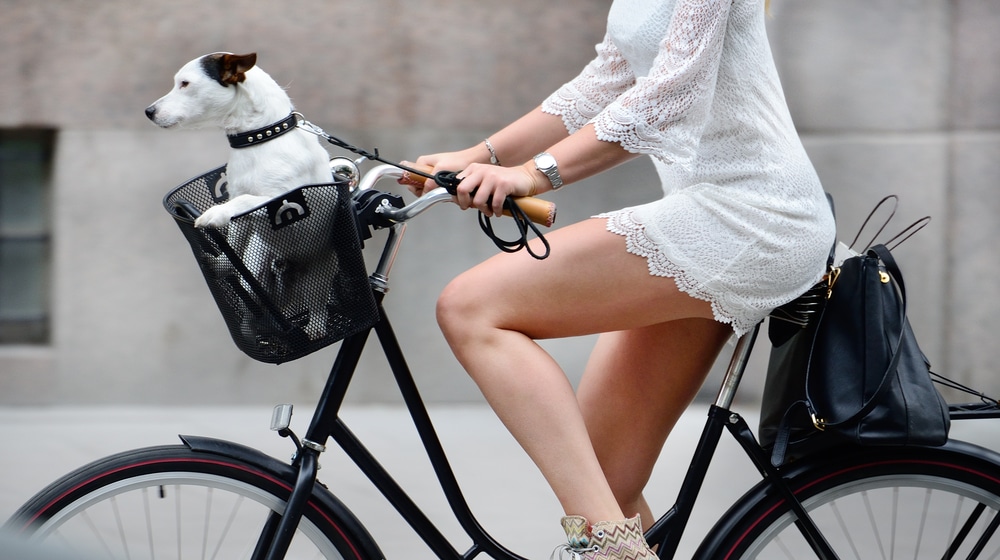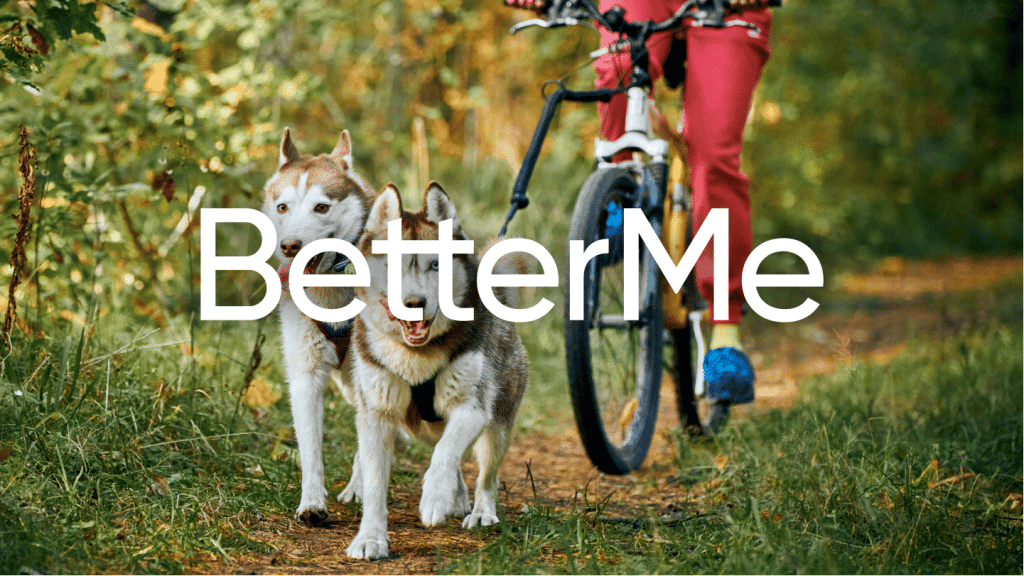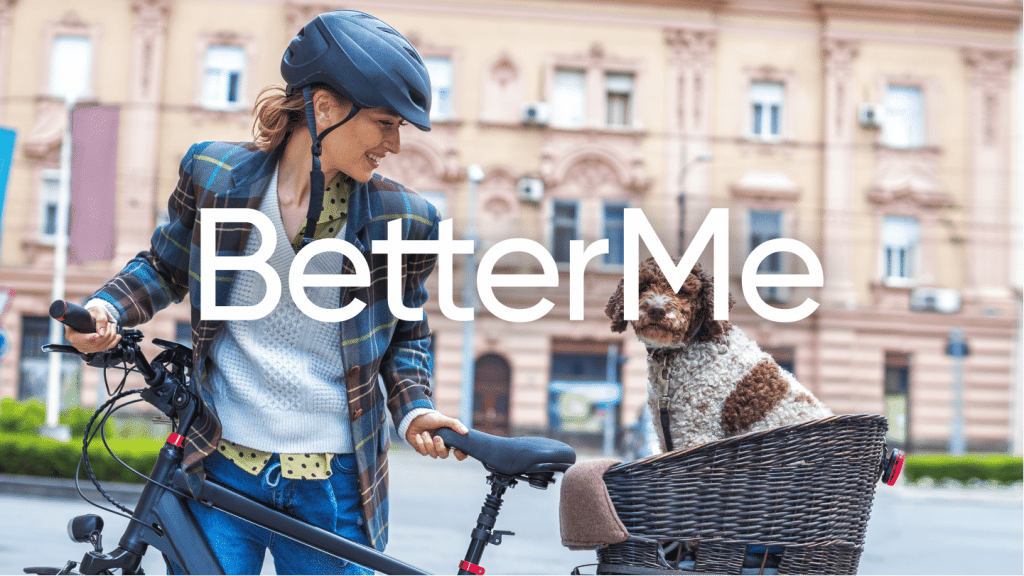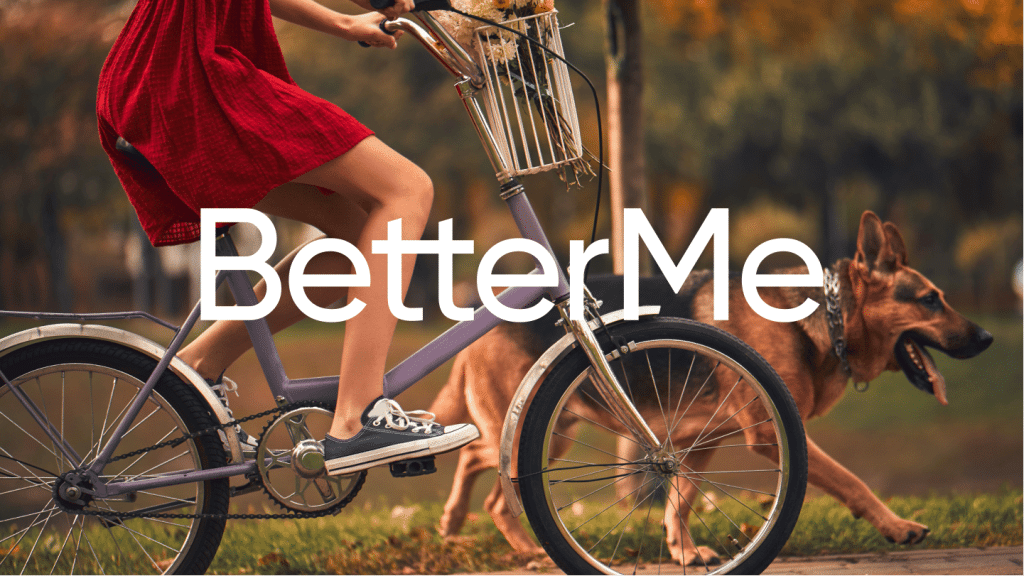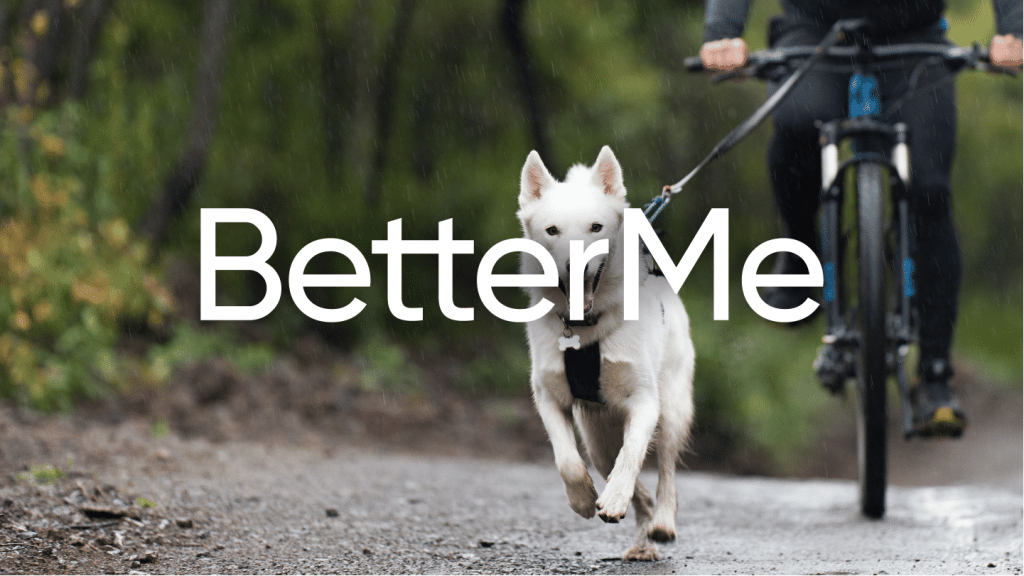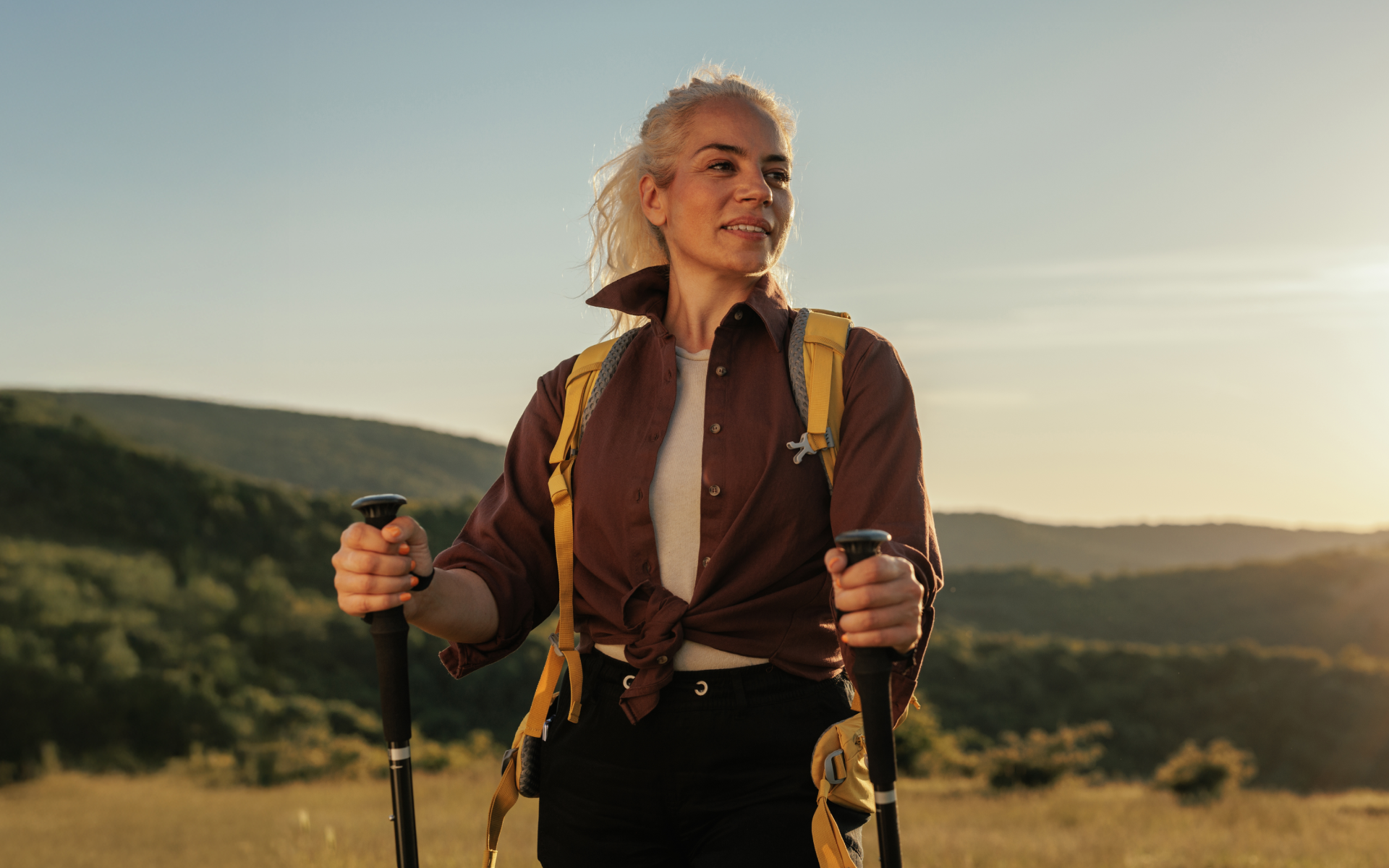Pets need exercise for almost the same reasons humans do—to keep their minds and bodies active, to prevent obesity and associated health problems, and to enjoy the outdoors. Fortunately, biking is a great way to give your dog the exercise they need while getting some fresh air yourself! While biking with a dog may seem simple enough, there are a few things to keep in mind to make sure the experience is enjoyable for both you and your pup. More importantly, safety should always be a priority when biking with a dog. Let’s get into some of the vet-approved tips on why and how you should bike with your dog.
Why Go Biking With Your Dog?
The benefits of biking for both people and pets are many. Biking is a low-impact activity, meaning it’s gentle on your joints while still providing an excellent cardio workout.
For dogs, biking provides an opportunity to get out and explore the world in a new way. It also gives them a chance to bond with their human companions while getting some much-needed exercise.
Obesity is also a huge problem in the pet population, and biking is an excellent way to help your dog lose weight or maintain a healthy weight (9).
Dogs that are resistant to walking or running may be more open to biking since it’s a non-weight-bearing activity. This is especially true for dogs with arthritis or other joint problems. In this case, having them in a basket or backpack is ideal so they’re not putting any pressure on their joints.
Of course, all of these benefits are contingent on you and your dog being safe while biking. Keep reading for some tips on how to do just that.
Read More: Treadmill Vs Bike: Which Machine Should You Use?
How To Bike Safely With Your Dog
The most important thing to remember when biking with your dog is that safety comes first. That means taking the necessary precautions to ensure both you and your pup are safe and comfortable while on the move.
Here are a few tips to help you do just that:
Consider Your Dog’s Abilities
Dogs are abled differently, and these abilities come down to their breed and genetics. Some dogs are simply better built for biking than others.
For example, short-legged breeds like dachshunds and basset hounds may have a hard time keeping up with you on a bike. Similarly, small breeds may have trouble breathing if they’re going too fast.
On the other hand, athletic breeds like border collies and Australian shepherds were practically born to run (or bike, in this case). These dogs will likely have no problem keeping up with you on a bike.
Consider Your Dog’s Health And Physical State
In addition to their abilities, you should also consider your dog’s health and physical state before taking them on a bike ride.
For example, puppies and senior dogs may not be able to handle the same level of activity as adult dogs. If your dog is pregnant, has joint problems, or is recovering from an injury, biking may not be the best activity for them.
It’s always a good idea to talk to your veterinarian before starting any new exercise regimen with your dog, just to be safe (8).
Bike carriers, baskets, backpacks, or trailers are all options you may consider for your dog that can make biking easier and safer for both of you (1).
Consider How Well-Trained Your Dog Is
An out-of-control puppy or dog that isn’t well-trained can quickly turn a bike ride into a dangerous situation. If your dog is prone to pulling on the leash, darting off after squirrels, or generally not paying attention to you, biking may not be the best activity for them.
You may want to consider some obedience training before taking your dog out on a bike ride. This will help them learn basic commands like “sit,” “stay,” and “come” that can be useful while biking.
Leash training is also important for biking with your dog. Dogs should always be on a leash when biking, and they should be trained to walk alongside you without pulling (2).
This can take some practice, but it’s essential for keeping both you and your dog safe while biking.
Some basic leash training tips include:
- Start with shorter leash walks in an area with little to no distractions.
- Gradually increase the length of your leash walks as your dog gets better at walking calmly by your side.
- Never yank on the leash or allow your dog to pull you along. This will only reinforce bad leash behavior.
- Be consistent with your commands and rewards, and remain patient while training your dog.
Looking for a way to break the vicious cycle of weight loss and tone up all the jiggly parts? Watch the extra pounds fly off and your muscles firm up with the BetterMe app!
Choose The Right Gear
You’re not the only one who needs the right gear for biking – your dog does too! Depending on how you’re biking with your dog, there are certain pieces of gear you may need, to keep both of you safe and comfortable.
For example, if you’re biking with your dog on a leash, you’ll need a harness that fits well and doesn’t restrict their movement. You may also want to consider the kind of leash that attaches to your bike so you can have both hands free.
If you’re using a carrier, basket, or trailer, make sure it’s the right size for your dog and that they’re secured in it properly.
You should also be sure to pack plenty of water and some snacks for your dog, as well as a first-aid kit for yourself and your pup just in case.
A GPS dog tracker can also be a helpful piece of gear, especially if you’re biking in an unfamiliar area. This way, you could keep track of your dog if they happen to run off.
And last but not least, don’t forget your bike gear! Be sure to wear a helmet and proper shoes, and consider investing in some bike gloves to make your ride more comfortable (4) (7).
Start Slow And Progress With Caution
A dog that’s never been around a bike before may be a little intimidated by the sight and sound of one. It’s important to start slow and let your dog get used to the bike before taking them on a ride (1).
Here are a few tips for getting your dog comfortable with biking:
- Start by simply showing your dog the bike and letting them sniff it and explore it at their own pace.
- Once they seem comfortable, try pushing the bike around while they walk alongside you.
- If they’re still doing well, try getting on the bike and riding it slowly while they walk next to you.
- Progress to taking short rides around the block or in a quiet park before going on longer adventures.
- Be patient with your dog and let them progress at their own pace. Forcing them to do something they’re not ready for can make them scared of biking and may make it harder to train them to enjoy it in the future.
Read More: Stationary Bike Workout Plan For Weight Loss And Muscle Gain
Choose Safe Terrains
The terrain you choose to bike on can make a big difference in how enjoyable the experience is for both you and your dog.
For example, biking on pavement may be too much for some dog’s sensitive paws, and rough terrain like dirt trails could be tough on their joints. When possible, stick to grassy areas or soft surfaces like sand to make the ride more comfortable for your dog.
Of course, the terrain you can bike on will also depend on what type of bike you’re using. A mountain bike, for example, can handle rougher terrain than a road bike.
Whenever possible, it’s best to avoid hot pavement, as this can damage your dog’s paw pads (6). If you must bike on pavement, try to do so early in the morning or later at night when the pavement is cooler.
Be Conscious Of The Weather
While biking, the weather can have a big impact on both you and your dog. If it’s too hot, for example, you may not be able to maintain a comfortable pace, and your dog may overheat.
Some signs that your dog is too hot include excessive panting, drooling, lethargy, and dark or bright red tongue (5). If you notice any of these signs, stop immediately and find a cool place for your dog to rest.
Your dog is at risk of heat stroke if their body temperature gets too high, so it’s important to be aware of the weather conditions and take breaks as needed (5).
Some ways to prevent your dog from overheating include:
- Picking a shady route to bike in
- Avoiding hot pavement
- Carrying extra water and taking breaks often
- Going slow and taking it easy
If it’s too cold outside, you may need to dress your dog in a coat or sweater to keep them warm. You may also want to consider using booties to protect their paws from the cold.
If you tend to let yourself off the hook, raise the white flag when things get tougher than you expected, send yourself on an unconscious binge-eating trip – BetterMe app is here to help you leave all of these sabotaging habits in the past!
Be Aware Of Your Surroundings
When biking with your dog, it’s important to be aware of your surroundings at all times. This means keeping an eye out for cars, bikes, and other potential hazards.
You should also be aware of the things your dog is smelling and looking at to make sure they don’t get too excited and try to chase after something. As a reminder, it’s important to keep your dog on a leash whenever possible so you can maintain control over them (2).
If you’re biking in an area with a lot of people or other animals, keep your dog close to you and make sure they’re not getting too overwhelmed.
Some dogs do better when they’re wearing a muzzle while biking so they can’t bark at or bite other people or animals. This is something you may want to consider if your dog is prone to getting too excited when they’re around other people or animals (3).
The Bottom Line
Biking with your dog can be a great way to bond and get some exercise together. Just be sure to take things slowly, choose the right gear, and obey all the rules of the road. With a little preparation, you and your pup will be biking like pros in no time!
Get your personalized
meal plan!
DISCLAIMER:
This article is intended for general informational purposes only and does not serve to address individual circumstances. It is not a substitute for professional advice or help and should not be relied on for making any kind of decision-making. Any action taken as a direct or indirect result of the information in this article is entirely at your own risk and is your sole responsibility.
BetterMe, its content staff, and its medical advisors accept no responsibility for inaccuracies, errors, misstatements, inconsistencies, or omissions and specifically disclaim any liability, loss or risk, personal, professional or otherwise, which may be incurred as a consequence, directly or indirectly, of the use and/or application of any content.
You should always seek the advice of your physician or other qualified health provider with any questions you may have regarding a medical condition or your specific situation. Never disregard professional medical advice or delay seeking it because of BetterMe content. If you suspect or think you may have a medical emergency, call your doctor.
SOURCES:
- Biking with Dogs: Tips & Safety (2021, akc.org)
- Dog behaviour on walks and the effect of use of the leash (2010, ncbi.nlm.nih.gov)
- Muzzles: A Tool to Keep Everyone Safe (2018, resources.bestfriends.org)
- Personal Protective Gear (n.d., msf-usa.org)
- Pet Health: Protect your dog from heat exhaustion and heat stroke during summer months (2015, colostate.edu)
- Protect Dog Paws on Hot Pavement (2021, akc.org)
- Systematic reviews of bicycle helmet research (2017, ncbi.nlm.nih.gov)
- Walking with your pet (n.d., avma.org)
- Weight management in obese pets: the tailoring concept and how it can improve results (2016, biomedcentral.com)
